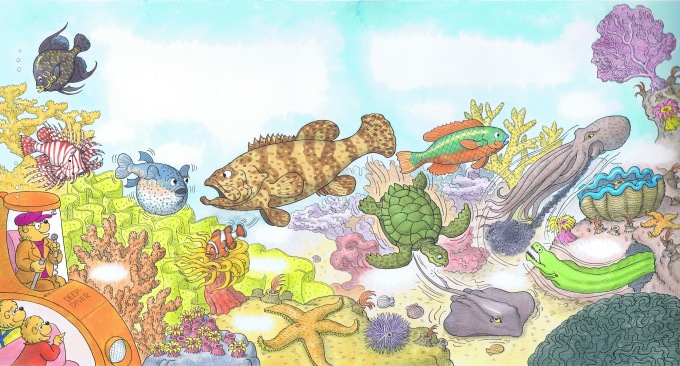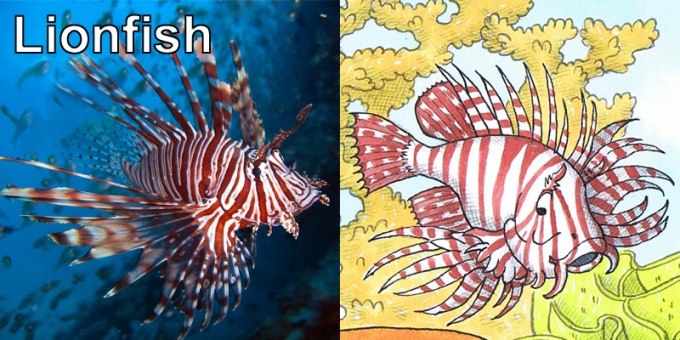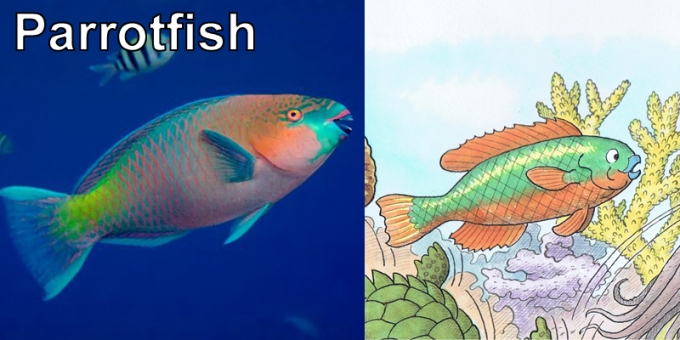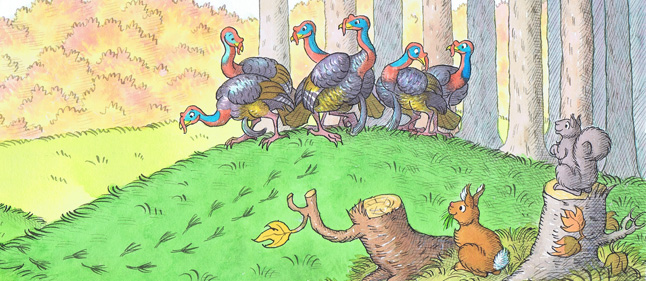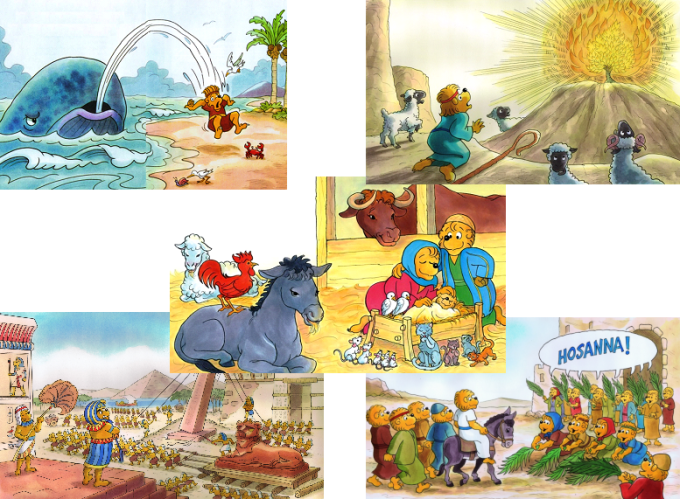The following is the Introduction to Child’s Play, the Berenstain Baby Boom, 1946-1964, Cartoon Art of Stan and Jan Berenstain, by Mike Berenstain, published by Abrams, Inc., 2008.

Jan at about age 8
When asked “What is art?” in the 1970s, cultural theorist Marshall McLuhan replied, “Art is whatever you can get away with.” In Stan’s and my day, it wasn’t. Talented art students in the Philadelphia area schools in the 1930s were singled out by discerning art teachers, mentored, and sent on for advanced instruction by accomplished artists at the city’s distinguished art schools. Meeting for the first time at the Philadelphia Museum School of Industrial Art (now the University of the Arts), we both were surprised and bemused that we would meet at all. We came from different high schools – city and suburban. Our backgrounds were different – Jewish and Protestant. But we thought of ourselves as, simply, American and, primarily, as artists.
Comparing notes further, there was something more significant we had in common – our American childhoods. Stan and his sister and I and my brothers had the same toys, played the same games and sports, had the same lessons in school, had similar hobbies, read many of the same books, knew a lot of the same music, listened to the same radio programs and often went to the same movies and museums.

Stan about 4 on his trike in front his father’s Army-Navy store about 1927
Making model airplanes from strips of balsa wood and tissue paper was a hobby of Stan’s. He also recalled sending in box tops to get a Buck Rogers Rocket Gun, which, it turned out, was made of paper. Among his other childhood recollections were stamping tin cans onto his shoes to make a racket while walking down the sidewalk, making a rubber band gun out of strips of inner tube, and sneaking into the back of the horse-drawn ice truck to snitch strips of ice during the long, hot Philadelphia summers.
One of my chief hobbies was making clothes for my two dolls. One doll was an infant with a china head. If I dropped it while playing and it broke, being that it was during the Depression, it didn’t get a new one until Christmas. My other doll was a “Mama” doll with enameled arms, legs, face, and head with curled (horse) hair, and a stuffed cloth body with a voice box that said, “Mama!” when bent over. I had crayons and watercolors to draw and paint with, as did Stan, and colored modeling clay that after much modeling of various animals became blended into one color – a grayish brown.
Since my father was an expert carpenter, he was able to build elaborate playthings for us – things we wouldn’t otherwise have had in the hard times of the early 1930s. There was a hand-painted oversize Monopoly board (the reverse side was a checker board) and an elaborate pinball game made out of nothing more expensive than plywood and nails.
When, after World War II, Stan and I married and became a cartooning team, we drew on our childhood memories of these toys and games, and of Depression-era back-alley play to create our first cartoons about child’s play. When we became parents ourselves, we passed most of our childhood enthusiasms on to our two sons, augmented by many of the new books, toys, and games that appeared in the 1950s. Renditions of these all found their way into our early art and cartoon work for books and magazines, renditions of toddlers Leo and Mike along with them.
This was long before we began to think about creating a family of bears as the subject of a series of children’s books. Back then, our people characters were mainstays of the thriving family magazines that, along with movies and radio, were the principal promulgations of popular culture. Magazines like The Saturday Evening Post and Collier’s had a combined weekly circulation of more than ten million and a readership of perhaps fifty million. Along with such monthly magazines as Ladies’ Home Journal, Woman’s Home Companion, Good Housekeeping, and McCall’s, family magazine readership was huge.
At the time, the Berenstain contribution to this pre-television world of mass communications was viewed as a contemporary chronicle of the universal experience of American childhood. Today, it can perhaps be best viewed as an opportunity for a nostalgic journey back to the post-war world of Leo and Mike and their fellow Baby Boomers.

Child’s Play, the Berenstain Baby Boom, 1946-1964, Cartoon Art of Stan and Jan Berenstain, by Mike Berenstain, published by Abrams, Inc., 2008
www.berenstainbears.com











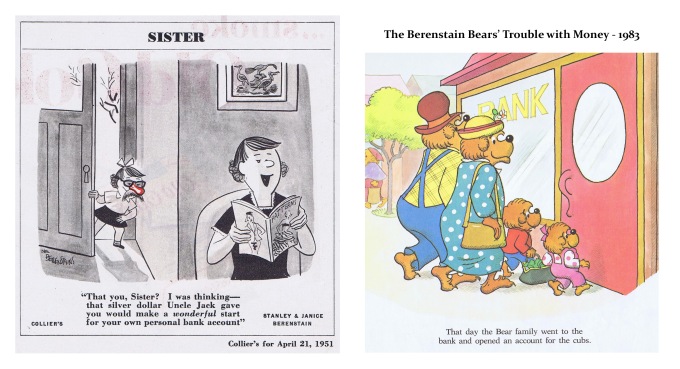
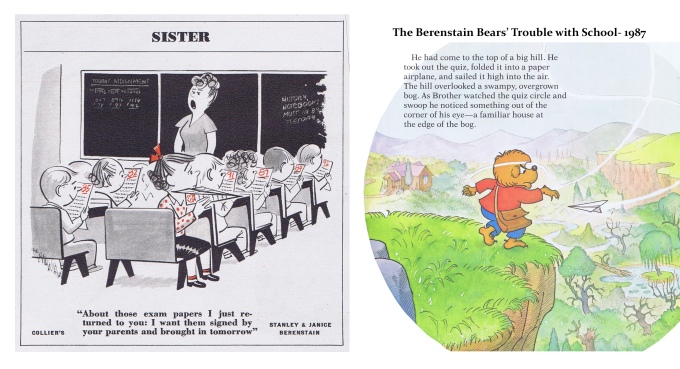





 “We knew from our first noodlings that our book would be about bears – a family of bears. We knew that they would live in a tree. We don’t know how we knew, but we knew. We knew we’d have three characters: a bluff, overenthusiastic Papa Bear who wore bib overalls and a plaid shirt and was a little like Stan, a wise Mama Bear who wore a blue dress with white polka dots and a similar polka-dotted dust-cap who was very like Jan, and a bright, lively little cub who was a lot like Leo. Michael, not yet one, didn’t make the cut.”
“We knew from our first noodlings that our book would be about bears – a family of bears. We knew that they would live in a tree. We don’t know how we knew, but we knew. We knew we’d have three characters: a bluff, overenthusiastic Papa Bear who wore bib overalls and a plaid shirt and was a little like Stan, a wise Mama Bear who wore a blue dress with white polka dots and a similar polka-dotted dust-cap who was very like Jan, and a bright, lively little cub who was a lot like Leo. Michael, not yet one, didn’t make the cut.”




